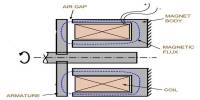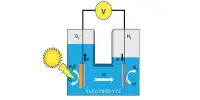The key to a flawless croissant is to use as many layers as you can, with butter in between each layer. Similar to this, a novel substance that shows promise for novel applications is composed of several, incredibly thin layers of metal, between which researchers can introduce various ions for diverse purposes. Their potential for usage in future high-tech electronics or energy storage is thereby greatly increased.
Until recently, these materials known as MXenes, pronounced “max-eens” were as labor-intensive as good croissants made in a French bakery.
However, a recent discovery by researchers at the University of Chicago demonstrates how to produce these MXenes far more swiftly and simply, with fewer harmful consequences.
Researchers hope the discovery, published March 23 in Science, will spur new innovation and pave the way towards using MXenes in everyday electronics and devices.
Atom economy
When they were discovered in 2011, MXenes made a lot of scientists very excited. A metal like gold or titanium typically stops acting like a metal when it is shaved to produce atomic-thin sheets.
MXenes, however, are able to preserve the unique properties of metal, such as their great electrical conductivity, due to extraordinarily strong chemical interactions.
These new MXenes are also visually beautiful. They stand up like flowers which may even make them better for reactions, because the edges are exposed and accessible for ions and molecules to move in between the metal layers.
Di Wang
They’re also easily customizable: “You can put ions between the layers to use them to store energy, for example,” said chemistry graduate student Di Wang, co-first author of the paper along with postdoctoral scholar Chenkun Zhou.
With all of these benefits, MXenes may prove to be quite beneficial when creating new gadgets, such as those that store electricity or prevent electromagnetic interference.
However, the only method we were aware of to produce MXenes required a number of difficult chemical engineering procedures, including heating the combination to 3,000°F and then immersing it in hydrofluoric acid.
“This is fine if you’re making a few grams for experiments in the laboratory, but if you wanted to make large amounts to use in commercial products, it would become a major corrosive waste disposal issue,” explained Dmitri Talapin, the Ernest DeWitt Burton Distinguished Service Professor of Chemistry at the University of Chicago, joint appointee at Argonne National Laboratory and the corresponding author on the paper.
The researchers applied chemical principles, particularly “atom economy,” which aims to reduce the amount of wasted atoms during a reaction, to create a more effective and less hazardous process.
The UChicago researchers uncovered novel chemical processes that enable production of MXenes from straightforward and affordable precursors without the need for hydrofluoric acid. It just requires one step, which is to combine various chemicals with the metal you want to use for the layers and heat it to 1,700°F.
“Then you open it up and there they are,” said Wang.
The simpler, less hazardous process opens up new opportunities for researchers to develop and investigate new variations of MXenes for various uses, such as various metal alloys or various ion flavorings. The technology was tested with the metals titanium and zirconium, but the researchers believe it may be applied to a wide range of additional combinations.
“These new MXenes are also visually beautiful,” Wang added. “They stand up like flowers which may even make them better for reactions, because the edges are exposed and accessible for ions and molecules to move in between the metal layers.”
Graduate student Wooje Cho was also a co-author on the paper. The exploration was made possible by help from UChicago colleagues across departments, including theoretical chemist Suri Vaikuntanathan, X-ray research facility director Alexander Filatov, and electrochemists Chong Liu and Mingzhan Wang of the Pritzker School of Molecular Engineering.
Robert Klie and Francisco Lagunas with the University of Illinois Chicago performed electron microscopy.
















